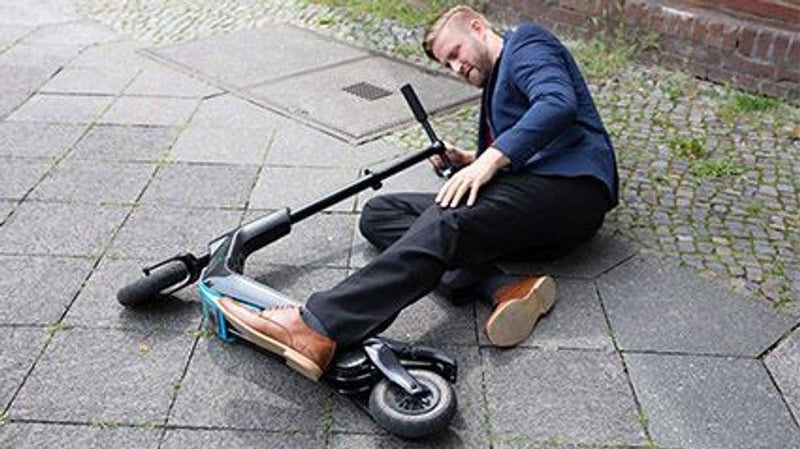Get Healthy!

- Cara Murez
- Posted October 18, 2023
U.S. Injuries From E-Bikes, E-Scooters Jumped 21% in One Year
E-bikes, e-scooters and hoverboards are everywhere -- and injuries related to their use are soaring.
The U.S. Consumer Product Safety Commission (CPSC) issued a new report on Tuesday showing that injuries associated with these so-called micro-mobility devices increased nearly 21% in 2022 alone, compared to 2021.
Injury estimates were based on data collected between 2017 and 2022 from a nationally representative sample of U.S. hospitals.
About 46% of all estimated e-bike injuries from 2017 to 2022 occurred in 2022 alone. Hoverboard injuries were the only type to go against trend, decreasing 26% from 2021 to 2022.
Between 2017 and 2022, 233 deaths were associated with these devices, according to the CPSC, although reporting is not yet complete.
Kids were a big portion of those injured, with children 14 and younger accounting for 36% of e-bike, e-scooter and hoverboard injuries during those years. That's double the 18% proportion of the U.S. population that kids comprise.
Black consumers represented 29% of injuries on these electric devices, a significantly higher proportion than their 13% of the U.S. population.
Additionally, more than 360,000 emergency department visits were related to these devices from 2017 through 2022.
Fractures and bruises/scrapes were the two most common injuries. The upper and lower limbs and the head and neck were most frequently injured.
Another significant hazard associated with these devices was fires. The CPSC said it was aware of 19 deaths associated with electric device fires from January 2021 through November 2022.
The CPSC has asked more than 2,000 manufacturers, importers, distributors and retailers to review their product lines and ensure they comply with safety standards, to reduce the risk of fires.
Consumers can also help prevent fire injuries by only using products that comply with safety standards, always be present when charging these products, never sleeping while charging them and only using an approved replacement battery pack.
Never use a device with a modified battery pack, the CPSC advised.
Follow the manufacturer's instructions for proper charging and unplug the device when done.
Never throw lithium batteries into the trash or general recycling. Take them to a local battery recycler or hazardous waste collection center.
The CPSC offers these safety recommendations for riders:
- Always wear a bicycle helmet when riding to protect your head in a fall.
- Check for any damage to the device before riding, including looking at handlebars, brakes, throttle, bell, lights, tires, cables and frame.
- Be sure to be seen, knowing that devices are small, quick and quiet, which can make them harder for motorists to see.
- Expect vehicle drivers and pedestrians not to see you. Slow down and stay aware of your surroundings.
- Use the bell/horn to alert others.
- Do not make abrupt, unpredictable movements.
- Also, be aware of obstacles that may cause your vehicle to stop suddenly and throw you off. Slow down and lean back when you have to ride over bumps.
- Never ride under the influence of alcohol or drugs.
- Only one person should ride per scooter. Additional riders can increase the risk and severity of collisions.
- Follow all manufacturer directions and safety information, including weight and age limits.
Report safety incidents or concerns with consumer products to CPSC at www.SaferProducts.gov.
More information
The National Fire Protection Association has more on e-bike and e-scooter safety.
SOURCE: U.S. Consumer Product Safety Commission (CPSC), news release, Oct. 17, 2023
